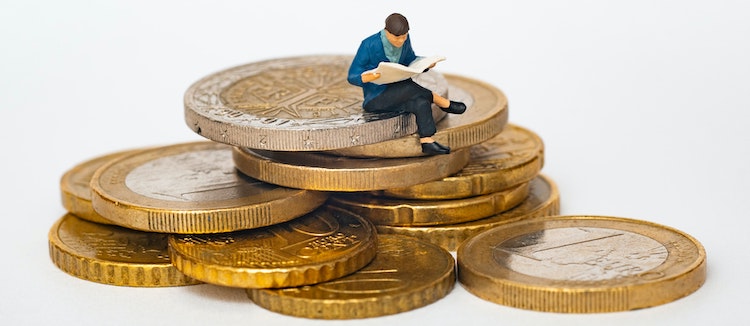

This article is an excerpt from the Shortform book guide to "One Up On Wall Street" by Peter Lynch. Shortform has the world's best summaries and analyses of books you should be reading.
Like this article? Sign up for a free trial here.
What is the P/E ratio in the share market? How is it calculated?
The P/E ratio is an indicator of the stock price to the company’s earnings per share. You can also think of it as how long it will take the company to recoup your investment.
Here is how to use the P/E ratio to evaluate the future potential of stocks.
The P/E Ratio Explained
What is the P/E ratio in the share market? The P/E ratio is the stock Price to company Earnings ratio. You obtain this by dividing the company’s stock price by the company’s earnings per share (essentially how much the company makes per share; this is net profits divided by the number of shares issued).
For instance, if a stock price is $4.00 and the company’s earnings per share are $1.00, the P/E ratio will be ($4.00 : $1.00 =) 4.
Lynch writes that the P/E ratio is helpful for several reasons: You can think of it as the number of years it will take the company to earn back your initial investment. Therefore, a high P/E ratio (20 or 30, for instance) may be unattractive while a low one (say 6 or 7) may be attractive.
(Shortform note: Another way to think about the P/E ratio is that it’s an indicator of what investors are willing to pay today for a stock based on its past earnings or projected future earnings. So if a company has a high P/E today, it might mean that investors expect the company to grow significantly in the future and are willing to pay a high share price now. Therefore, while you can sometimes take a high P/E as a warning sign and a low P/E as an invitation to buy, as Lynch indicates, a high P/E can also be a sign of future growth.)
Lynch also notes that by comparing the P/E ratio to the P/E ratios of other companies in the industry or to that company’s previous P/E ratios, you can see if a stock is priced fairly, too high, or too low. For instance, if a company’s stock currently has a P/E of 20 (stock price of $100/earnings per share earnings of $5) and last year had a P/E of 5 (stock price of $10/earnings per share earnings of $2), you can tell that the stock price is very high now. You might therefore wait until it falls before investing.
(Shortform note: What exactly does it mean for a stock to be “priced too high or too low?” When a stock is priced too high—or overvalued—the company’s projected future earnings don’t justify the high price. In such cases, the stock is expected to drop to more accurately reflect company earnings. In the same way, a stock that’s priced too low—undervalued—sells for less than what it should sell for, based on the company’s performance.)
When looking at P/E ratios to help guide your investing decisions, take into account what type of company it is. You can’t expect the same ratios for dependable companies, fast-growth companies, and slow-growth companies.
(Shortform note: It’s true that you can’t expect to find the same P/E ratios for different types of companies, as the rise of fast-growth technology companies illustrates. Tech companies can have P/E ratios in the hundreds or thousands: The mobile payments company Square recently had a P/E of 1052.75.)

———End of Preview———
Like what you just read? Read the rest of the world's best book summary and analysis of Peter Lynch's "One Up On Wall Street" at Shortform.
Here's what you'll find in our full One Up On Wall Street summary:
- Why individuals fare better in the stock market than professionals and firms
- A no-nonsense approach to the stock market
- Why you shouldn't follow the complex predictions of so-called professionals






